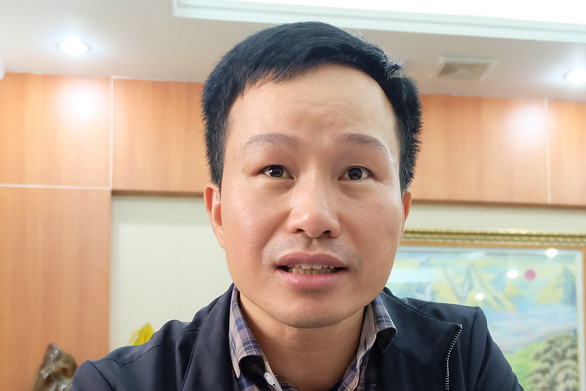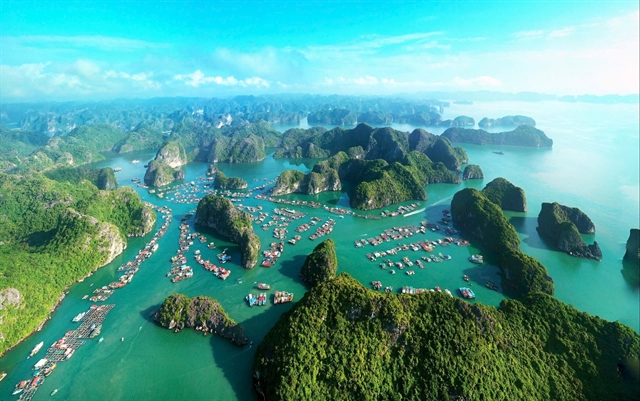 Opinion
Opinion

Triệu Đức Huy, deputy director general of the National Centre for Water Resources Planning and Investigation, under the Ministry of Natural Resources and Environment, speaks to the newspaper Tuổi Trẻ (Youth) on the need to preserve water resources

|
| Triệu Đức Huy. — Photo tuoitre.vn |
Triệu Đức Huy, deputy director general of the National Centre for Water Resources Planning and Surveys, under the Ministry of Natural Resources and Environment, speaks to the newspaper Tuổi Trẻ (Youth) on the need to preserve underground water resources in major urban areas throughout the country.
What are the major problems that Hà Nội and HCM City face in using underground water?
Hà Nội is facing a serious problem of water surface shortage in all 12 inner districts. For example, the Hạ Đình Water Plant in Thanh Xuân District and the Mai Dịch Water Plant in Cầu Giấy District are both facing a serious problem of water surface shortage in their daily operation. One of the key reasons leading to such a problem is the dense distribution of so many surface water plants in Hà Nội’s inner districts. Vice versa, many water tanks along Hà Nội’s rivers with abundant water resources have not been properly utilised.
Such unbalanced water exploitation has become the main cause leading to water scarcity in inner districts.
HCM City is also facing similar issues, due to the irrational location of water wells. For example, in HCM City, most underground water sources are situated deep underground. Adding to the problem is that the sources of water supplied to the city's consumption are quite far away or even in other localities, but some of these sources are also fed by the water bodies beyond the border.
Can you comment on land subsidence in some major cities due to over-extraction of underground water?
We have already touched upon the negative impacts of over-extraction of underground water in Hà Nội and HCM City. For example, in Pháp Vân area, which is some 10km south of Hà Nội, we have surveyed and studied land subsidence for many years but only very recently did we manage to obtain concrete evidence that this phenomenon is partly influenced by underground water exploitation.
HCM City is no different! However, with deep underground water, we need more thorough analysis. Additionally, the management of water extraction in the shallower surfaces in the past few years seems to have been neglected and the situation has gone beyond control. This has led to a big problem of land subsidence in many areas throughout the city.
However, to determine if the over-extraction of underground water is the main factor leading to the problem of land subsidence in the city, we need to conduct separate research.
What solutions do we need for each urban area before making our decision on the exploitation and sustainable extraction of underground water?
We recommend that before making any decision on the exploitation of any water well we need to conduct a thorough study on the geological position of the area. For example, with an area next to a river, we can adopt a plan to extract higher water output than the average.
For example, in Hà Nội, if we want to make some adjustments to some water wells next to the Red River, like that of the Yên Phụ field, we can extract hundreds of thousands of cu.m. of water per day without any worries.
Similarly, for HCM City, we also recommend a plan, which involves revision of the current well locations and density, that could ensure a daily quota of 400,000 cu.m., instead of having to reduce the daily extraction amount to 100,000 cu.m.
Can you talk more about the issues HCM City faces?
We have already made a thorough study on the water extraction volume that can be done in HCM City.
In our study we have already come up with specific recommendations on the water extraction levels in each locality/region.
In our report, we have suggested that if the city wants to extract up to 400,000 cu.m. of water per day, the city should strictly follow what we have recommended. For example, we have recommended that in certain areas which have been over-harvested to the point of near exhaustion, authorities should come up with a plan to gradually reduce water extraction volume while pumping up extraction in other more abundant supplies.
We have conducted research on the extraction of underground water in nine major cities and towns and our proposal has already been approved by the Prime Minister. It will be implemented in two phases – phase 1 which has already been studied in nine urban areas and in phase 2 – it will be implemented in 18 other urban areas. — VNS




